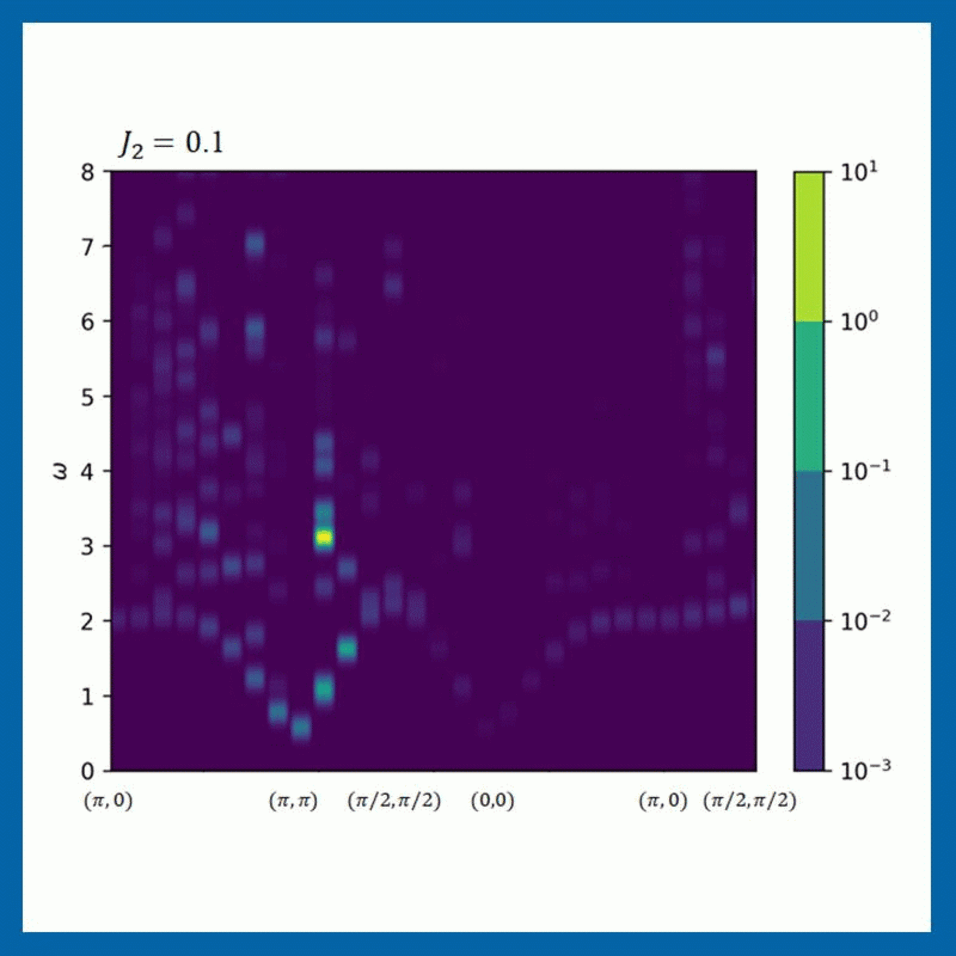The paper, authored jointly by Wei-Lin Tu, Laurens Vanderstraeten, our group leader Norbert Schuch, Hyun-Yong Lee, Naoki Kawashima, and Ji-Yao Chen, has just been published in PRX Quantum [W.-L. Tu et al., Generating Function for Projected Entangled-Pair States. PRX Quantum 5, 010335 (2024)].
Many of the most exciting developments in the history of condensed matter have ultimately revolved around the discovery of a new quasiparticle – e.g., phonons, magnons, Cooper pairs, polarons, spinons, or anyons, to just name a few. Projected entangled-pair states (PEPS) have been established as a powerful framework for the study of ground state properties of two-dimensional quantum many-body systems. Yet, properties of quasiparticle excitations are still rather cumbersome to compute, as one has to implement a summation over an infinite set of tensor diagrams.
The present work provides a simple solution for this problem, allowing efficient computation of excitation spectra and dynamical correlations with PEPS. The key idea is to represent the tensor diagram summations by a suitably defined generating function for PEPS. This way, relevant objects in determining excitations can be expressed as derivatives of a single tensor diagram and can thereby be efficiently and straightforwardly be computed.
For more info on this work take a look at the open-access paper at PRX Quantum or on arXiv.
This work has received support through the ERC grant SEQUAM and the Austrian Science Fund FWF (grant DOIs 10.55776/P36305 and 10.55776/F71).

